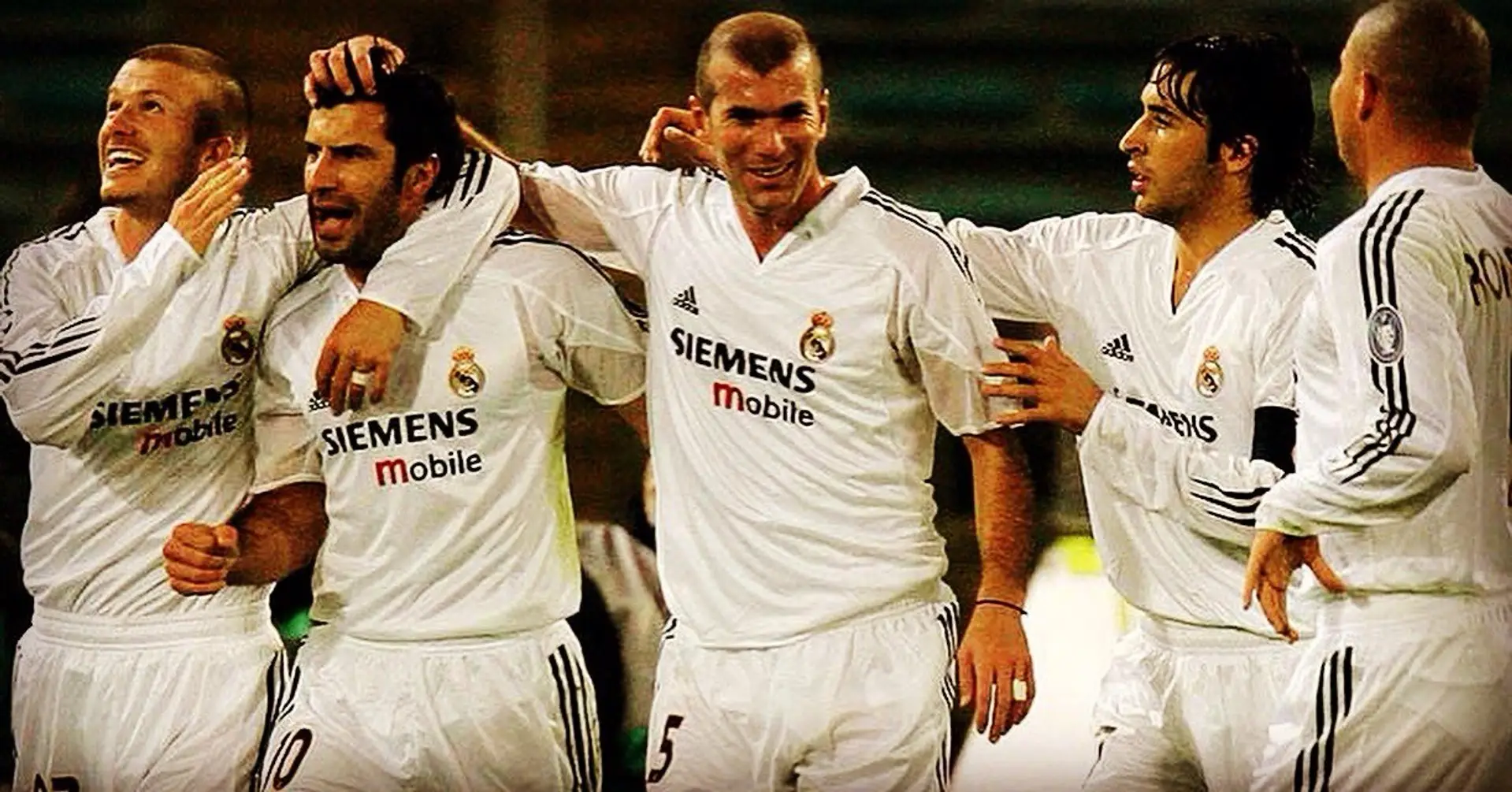Real Madrid’s Galácticos era in the early 2000s stands out as a period of unparalleled glamour and star power in football history. Under the presidency of newly appointed Florentino Perez, Los Blancos created an ambitious transfer strategy to assemble a team of global superstars. They aimed to merge financial prowess with sporting success, creating a team that would dominate on the pitch and generate significant commercial revenue off the pitch.
Fast forward to June 2024, and Real Madrid’s triumph over Borussia Dortmund in the UEFA Champions League signals the dawn of a new era. The impending arrival of Kylian Mbappé and Endrick, joining the likes of Jude Bellingham and Vinicius Junior, has led some to suggest that we are going to see a new formation of the Galácticos.
In this latest edition of The Edit, we look back at the original Galácticos and the strategy deployed by Florentino Perez.
The genius of the Galácticos
For much of the 1990s, Real Madrid were forced to play second best to Barcelona in La Liga. Johan Cruyff’s Barcelona dream team dominated the Spanish domestic landscape. Los Blancos did end a three decade long wait for a European Cup by winning the Champions League in 1998. They also lifted the trophy in 2000. But the club was still crying out for new leadership at the start of the millennium.
Step forward Florentino Perez and the start of the Galácticos era. Perez vowed to bring the best players in the world to the Santiago Bernabeu and dominate world football. The strategy was to mix superstar signings with the existing core group of players already at Madrid; players like Fernando Hierro, Raul, Roberto Carlos, and Iker Casillas.
By leveraging their star power to boost the club’s brand and revenue stream, the strategy was also about turning Real Madrid into a global marketing brand. The influx of superstar players significantly boosted Real Madrid’s revenue through merchandise sales, sponsorship deals, and global fan engagement. The club’s brand value skyrocketed, establishing Real Madrid as a leading global sports brand.
The stars of the Galácticos
Luis Figo (2000)
Perez initiated his newfound transfer approach by signing Portuguese winger Luis Figo from arch-rivals Barcelona for a then world-record fee of €60 million. His transfer was one of the most controversial in football history, inciting anger from Barcelona fans but bringing flair and precision to Madrid’s midfield. In his first season with Madrid, Figo won the 2001 La Liga title, scoring 14 goals in all competitions. For his performances at Real, he was also named the 2001 FIFA World Player of the Year.
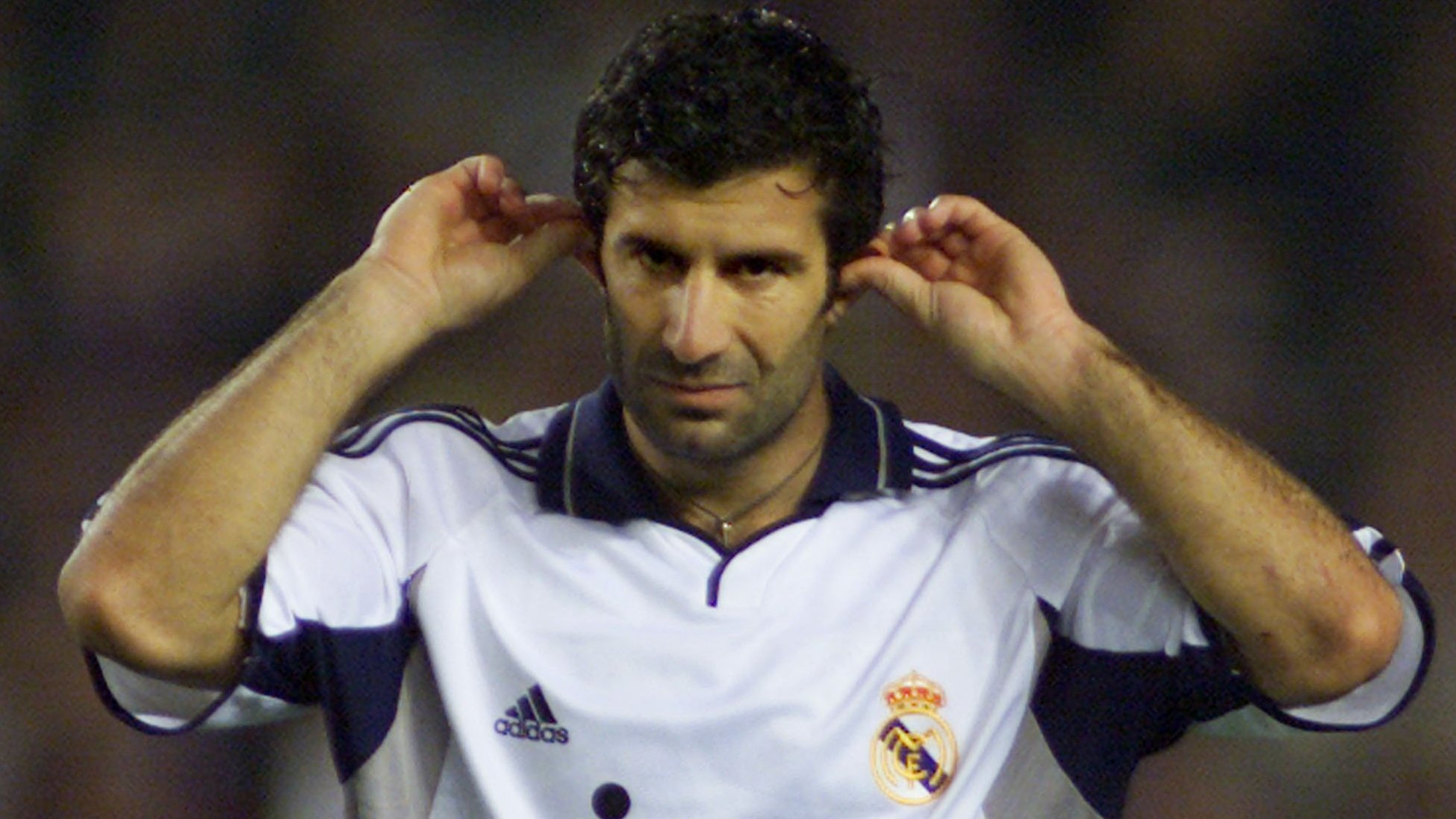
Source: https://www.thetimes.com/
Zinedine Zidane (2001)
Zidane, one of the most elegant and technically gifted midfielders of all time, joined from Juventus for a new world-record fee of €77.5 million. Zidane’s legendary volley in the 2002 Champions League final against Bayer Leverkusen is etched in football folklore. A moment of pure artistry that secured Real Madrid their ninth European title. The magnitude of the strike saw Zidane produce one of his most emotional goal celebrations as he ran toward the touchline with mouth wide open, screaming in delight.
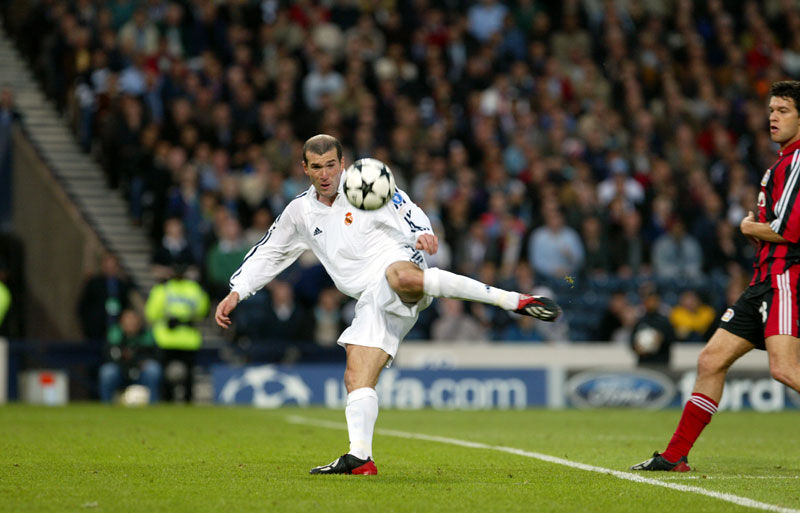
Source: https://www.realmadrid.com/
Ronaldo (2002)
The Brazilian striker was another marquee signing. Signing for €46 million his shirt sales broke all records on the first day. Ronaldo brought with him an incredible goal-scoring ability and a World Cup-winning pedigree, further enhancing Real Madrid’s attacking prowess. His 23 league goals in his first season helped to seal the La Liga title. Ronaldo also scored a hat-trick against Manchester United at Old Trafford in the Champions League quarter-final. After completing his hat-trick, Ronaldo was substituted off after 67 minutes and was given a standing ovation from both sets of fans.
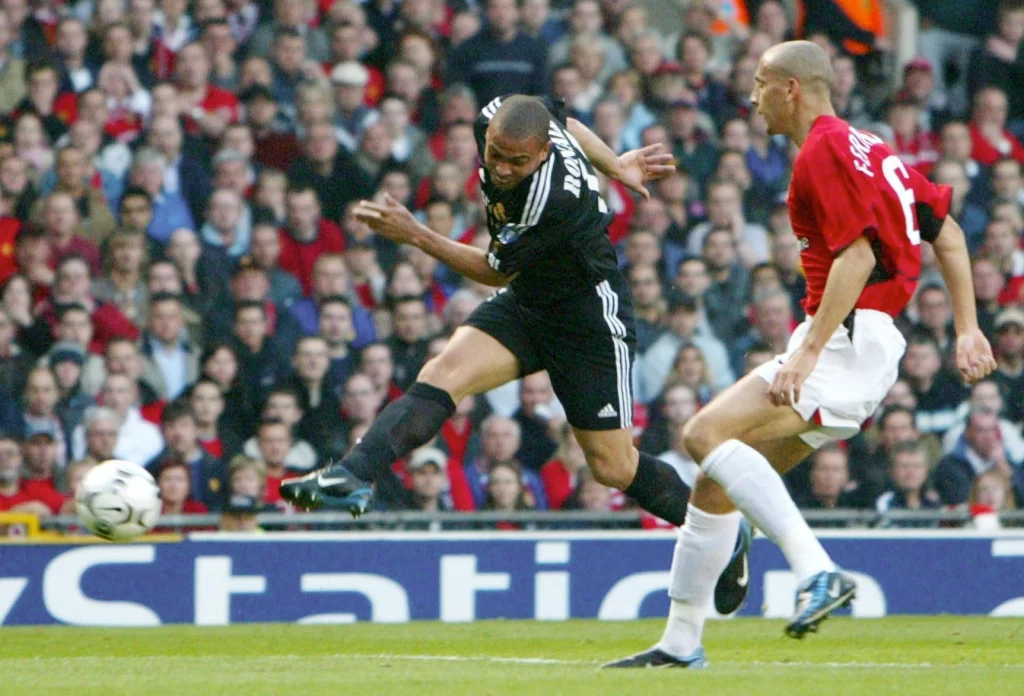
Source: https://talksport.com/
David Beckham (2003)
Beckham’s move from Manchester United for €37.5 million was as much about his footballing skills as his global appeal. Beckham’s brand value and marketability helped Real Madrid expand its reach, particularly in Asia and the United States. Let’s not look past how his precise crossing and free-kick prowess aadded a new dimension to Madrid’s attack. Beckham did not need much time to settle in. He scored five times in his first 16 matches, including a goal less than three minutes into his La Liga debut.
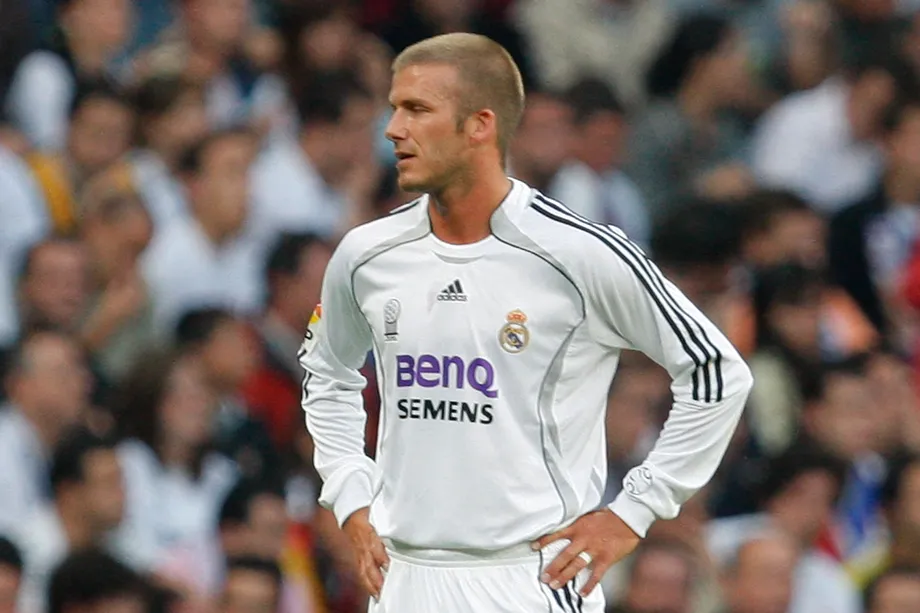
Source: https://www.managingmadrid.com/
Michael Owen (2004)
The English striker, and a former Ballon d’Or winner, joined from Liverpool. Although his tenure was brief, Owen added depth to the star-studded squad. With 13 La Liga goals in his debut season, he finished with the highest ratio of goals scored per minutes played in the league. Following the signing of two high-profile Brazilians, Robinho and Julio Baptista, Owen returned to the Premier League.
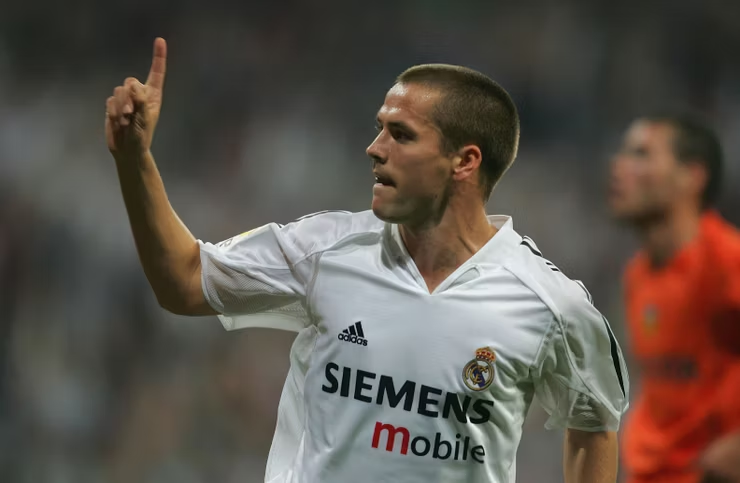
Source: https://www.givemesport.com/
Robinho & Sergio Ramos (2005)
In the summer of 2005, Perez unveiled two new signings. Robinho joined from Brazilian club Santos for €24 million. He’d taken the number 10 shirt previously worn by Luis Figo, who had moved to Inter Milan after five seasons in Madrid. The second signing was defender Sergio Ramos, acquired from Sevilla for a record €27 million transfer fee for a Spanish defender. Ramos took the number 4 shirt, formerly worn by Fernando Hierro, who had left for Qatar’s Al-Rayyan SC. Surprisingly, Ramos was the only Spanish player Perez bought during his first stint as Real Madrid president.
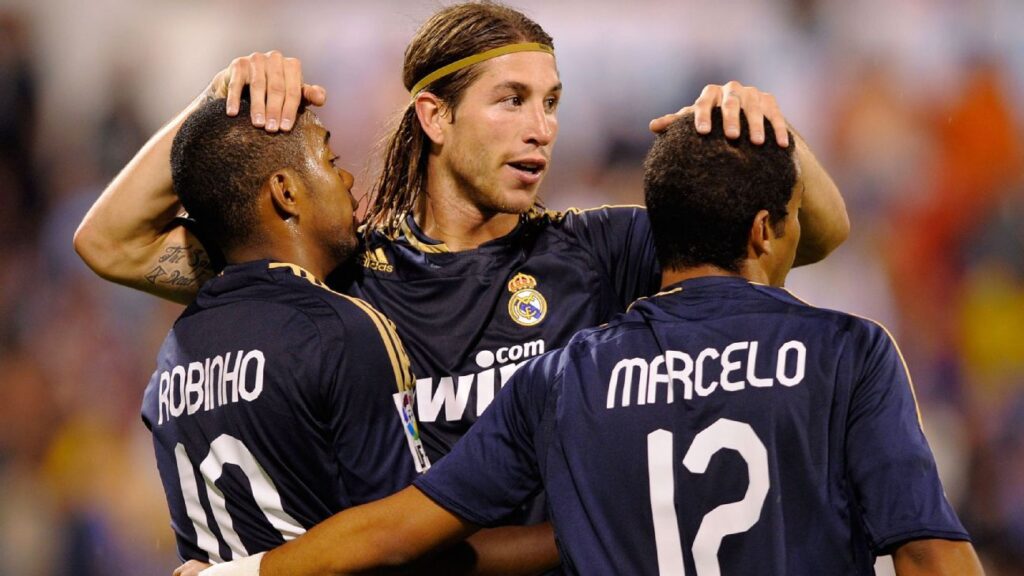
Source: https://www.espn.com.br/
The Galácticos impact on the pitch
The Galácticos were not just about glamorous signings. They were also expected to have an impact on the pitch and to dominate world football. But despite the immense talent and star power, Madrid had a mixed record of success. They won La Liga titles in 2001 and 2003, and the UEFA Champions League in 2002. Despite expectations of continued dominance in domestic and European competition, the club failed to win any trophy for the next three seasons. Ultimately, the Galácticos fell short of their expected sustained dominance.
The assembly of such high-profile talent was always going to pose challenges. These players were footballing icons and brought with them a set of egos and expectations. Most of them had been established as the focal point of their previous teams. Balancing those egos, managing defensive frailties, and maintaining team spirit were constant struggles. The decline in the team’s on-field performance hit a low in 2005 when they crashed out of the Champions League in the Round of 16 without scoring a goal in either leg. Perez eventually resigned as the club president in February 2006 and was succeeded by Ramón Calderón.
Despite the on-field struggles, the Galácticos laid the foundation for the modern super club concept. It demonstrated that a football club could be both a sporting powerhouse and a commercial giant. While the Galácticos project had its critics and did not always translate to consistent success on the pitch, its influence on football’s globalisation and commercial strategies is undeniable.
Today, the legacy of the Galácticos is visible in the way top clubs operate, with a focus on combining elite talent with strong commercial acumen. Real Madrid’s bold experiment in the early 2000s reshaped the footballing landscape.
Shop our football collection
All our products are made from high-quality materials that are both comfortable and long-lasting. Our embroidered designs are carefully crafted using the latest techniques and highest quality materials to ensure that they remain durable and eye-catching, even after multiple washes.
Celebrate your own football superstar with our collection of t-shirts. Match winning moments, iconic celebrations, cult heroes. With The Terrace Apparel you can wear the moment.


